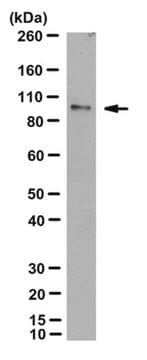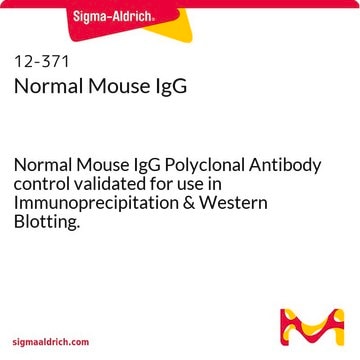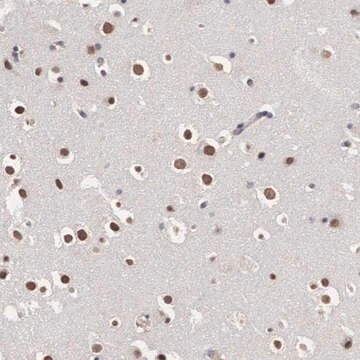SAB4200084
Monoclonal Anti-AGO1 antibody produced in rat
~1 mg/mL, clone 4B8, purified immunoglobulin
Sinónimos:
Anti-Argonaute-1, Anti-Eukaryotic Translation Initiation Factor 2c, subunit 1, Anti-GERP95, Anti-Golgi Endoplasmic Reticulum protein 95 kDa
Seleccione un Tamaño
373,10 €
Precio de catálogo533,00 €Ahorre 30 %Seleccione un Tamaño
About This Item
373,10 €
Precio de catálogo533,00 €Ahorre 30 %Productos recomendados
origen biológico
rat
Nivel de calidad
conjugado
unconjugated
forma del anticuerpo
purified immunoglobulin
tipo de anticuerpo
primary antibodies
clon
4B8, monoclonal
Formulario
buffered aqueous solution
mol peso
antigen ~95 kDa
reactividad de especies
human, canine, mouse, monkey, bovine
concentración
~1 mg/mL
técnicas
immunoprecipitation (IP): suitable
western blot: 1-2 μg/mL using HEK-293T cell extracts
isotipo
IgG2a
Condiciones de envío
dry ice
temp. de almacenamiento
−20°C
modificación del objetivo postraduccional
unmodified
Información sobre el gen
human ... EIF2C1(26523)
mouse ... Eif2c1(236511)
Descripción general
Inmunógeno
Aplicación
- Monoclonal Anti-AGO1 antibody produced in rat has been used in:
- western blotting
- immunoprecipitation
- chromatin immunoprecipitation(CHIP) assay
- RNA immunoprecipitation
- RNA-nChIP experiments
Immunoprecipitation (1 paper)
Acciones bioquímicas o fisiológicas
Forma física
Cláusula de descargo de responsabilidad
¿No encuentra el producto adecuado?
Pruebe nuestro Herramienta de selección de productos.
Código de clase de almacenamiento
10 - Combustible liquids
Punto de inflamabilidad (°F)
Not applicable
Punto de inflamabilidad (°C)
Not applicable
Elija entre una de las versiones más recientes:
¿Ya tiene este producto?
Encuentre la documentación para los productos que ha comprado recientemente en la Biblioteca de documentos.
Filtros activos
Nuestro equipo de científicos tiene experiencia en todas las áreas de investigación: Ciencias de la vida, Ciencia de los materiales, Síntesis química, Cromatografía, Analítica y muchas otras.
Póngase en contacto con el Servicio técnico








